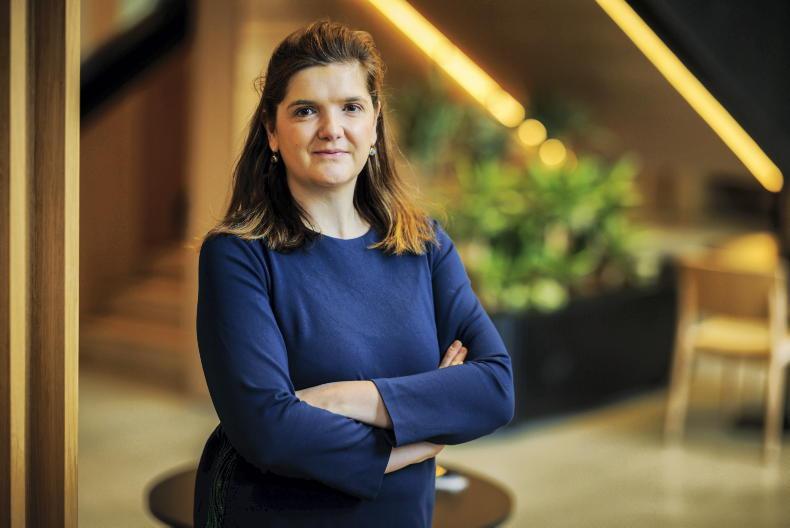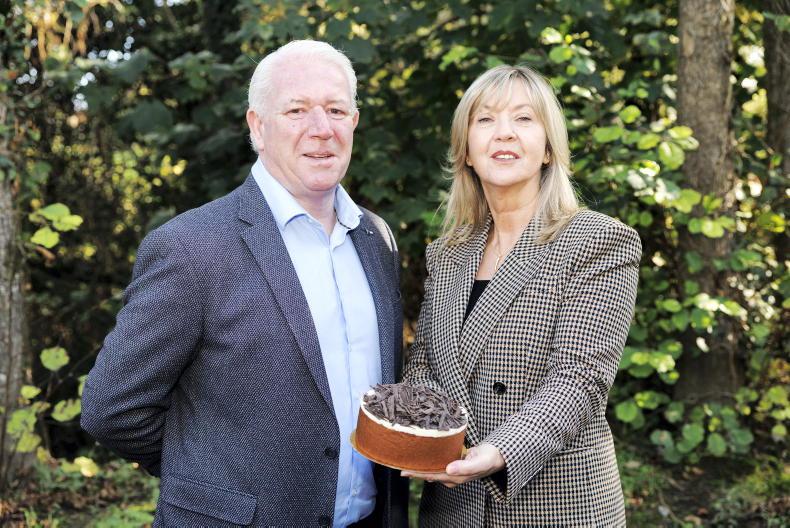“I’m trying to understand why people think they can’t speak Irish,” says Shane Barry. “It’s a question I’ve been trying to figure out for years.”
The psychology behind speaking a language
While Shane studied French and Spanish at third level, he explains that Irish never appealed to him.
“I had no interest in Irish in school,” he recalls. “People assume I’m a Gaeilgeoir because I’m studying the language, but I’m not – I’m trying to understand the psychology behind the Irish language.”

Shane Barry.
Census results
While Irish is designated as the official first language of Ireland, the 2016 Census found that only 1.7% of the population claim to speak the language on a daily basis, outside of education. Furthermore, within the Gaeltacht areas of Ireland (2% of the total population), only 63% of people claimed to be able to speak Irish.
Studies
As part of his research with Mary Immaculate College over the last two years, Shane found many of the negative attitudes towards Irish were directly associated with school.
He conducted a study on language proficiency among members of the civil service, published last October, examining how they felt about their Irish language skills. Participants were asked to rate their speaking ability in a conversational setting.
Shane chose to examine the civil service as it is obligated to provide services through both Irish and English to the population under the Official Languages Act 2003.
“I knew that there was a cohort of people there that could and could not speak Irish so I set up focus groups to examine both sides of the speakers and non-speakers,” he explains.
He concluded as many as 60% of participants were down-playing their ability to speak Irish, with many classifying themselves as non-speakers despite having grown up with Irish at home or in school.
Confidence in speaking Irish
“People are declaring themselves as non-speakers despite the fact that they spent over 2,000 hours in school studying it,” says Shane. “I don’t think we’re giving ourselves enough credit.”
He says confidence grew among participants during the study. The civil servants started using examples of their cúpla focal during conversations as aspects of the language slowly started to come back to them.
“Even if you sat in class having not contributed for 14 years of school, you’re going to have an idea,” he says. “You have words there to use and it’s just a case of slotting them into a formula.”
Shane explains that the lack of confidence in a language could be linked to the lack of quality feedback given in school.
“Without constructive feedback, you become dejected – you lose interest and don’t engage with a language.”
A lost language
“People don’t want to lose Irish, it’s our native language and it is the first language in the Constitution,” he continues. “Some people will say that the quickest way to get us to speak Irish is ban it in the morning and tell us that we can’t use it.
“Speaking Irish is all to do with confidence, but the Irish language definitely isn’t lost.”
Keeping Irish relevant –
in any small way
Jewellery designer, Sabine Lenz, believes our national language should be treasured and hopes her work will help preserve the Irish language for future generations.
Based in Cork, Sabine owns Enibas Jewellery which incorporates the Irish language into the pieces. Growing up in Hamburg, Germany, Sabine says she always had an interest in making jewellery.

“When I was very young, I used to make jewellery out of mirrors with a friend,” she recalls. “We sold them at German Christmas markets.”
With a background in design, Sabine established her business in 1993, in the seaside village of Schull, with her husband Len.
Including Irish words and phrases in her pieces got positive feedback.
“I always liked script on jewellery,” she recalls. “I started off by using words such as creideamh and grá and people really liked the Irish element.”
Although she doesn’t speak Irish fluently, Sabine has learned ‘bits and pieces’ throughout her years in business,
“I’m an outsider,” she explains. “I don’t have the history, the suffering and all the emotion that is connected with Irish and the language being taken away in the past.
“I just thought it was cool that there was another language in Ireland and it would be nice to bring it out in some other way and keep it alive.”
The emotional relationship with Irish
Sabine explains that the Irish language holds a special place for many people and recalls that it took years before she understood how emotional that relationship was.
“We have encountered so many stories of people who have gone through hard times,” she says. “The emotional and spiritual side to our jewellery is important to me. Our message goes further than the jewellery because it’s not just a fashion item to people.
“I am humbled, as an outsider to be embraced by the Irish people in delivering that meaning,” she adds.
Throughout the years, Sabine has learned the complexity of the Irish language.
“It is a very deep language,” she says. “When I bring out a new phrase, I ask fluent speakers, teachers and lecturers for their opinion as there are very few phrases that are straightforward.
“You can say it like this or like that,” she continues, “I was scared of learning it because I can see how difficult it is.”
Keeping Irish alive
While Sabine acknowledges that the spoken language is struggling, she hopes her jewellery will help keep Irish current.
“If there is some connection that makes Irish relevant, even in small bits and pieces, it helps in keeping it alive.” CL
Read more
Job of the week: head of people development and training at ifac
CAO important dates and details
“I’m trying to understand why people think they can’t speak Irish,” says Shane Barry. “It’s a question I’ve been trying to figure out for years.”
The psychology behind speaking a language
While Shane studied French and Spanish at third level, he explains that Irish never appealed to him.
“I had no interest in Irish in school,” he recalls. “People assume I’m a Gaeilgeoir because I’m studying the language, but I’m not – I’m trying to understand the psychology behind the Irish language.”

Shane Barry.
Census results
While Irish is designated as the official first language of Ireland, the 2016 Census found that only 1.7% of the population claim to speak the language on a daily basis, outside of education. Furthermore, within the Gaeltacht areas of Ireland (2% of the total population), only 63% of people claimed to be able to speak Irish.
Studies
As part of his research with Mary Immaculate College over the last two years, Shane found many of the negative attitudes towards Irish were directly associated with school.
He conducted a study on language proficiency among members of the civil service, published last October, examining how they felt about their Irish language skills. Participants were asked to rate their speaking ability in a conversational setting.
Shane chose to examine the civil service as it is obligated to provide services through both Irish and English to the population under the Official Languages Act 2003.
“I knew that there was a cohort of people there that could and could not speak Irish so I set up focus groups to examine both sides of the speakers and non-speakers,” he explains.
He concluded as many as 60% of participants were down-playing their ability to speak Irish, with many classifying themselves as non-speakers despite having grown up with Irish at home or in school.
Confidence in speaking Irish
“People are declaring themselves as non-speakers despite the fact that they spent over 2,000 hours in school studying it,” says Shane. “I don’t think we’re giving ourselves enough credit.”
He says confidence grew among participants during the study. The civil servants started using examples of their cúpla focal during conversations as aspects of the language slowly started to come back to them.
“Even if you sat in class having not contributed for 14 years of school, you’re going to have an idea,” he says. “You have words there to use and it’s just a case of slotting them into a formula.”
Shane explains that the lack of confidence in a language could be linked to the lack of quality feedback given in school.
“Without constructive feedback, you become dejected – you lose interest and don’t engage with a language.”
A lost language
“People don’t want to lose Irish, it’s our native language and it is the first language in the Constitution,” he continues. “Some people will say that the quickest way to get us to speak Irish is ban it in the morning and tell us that we can’t use it.
“Speaking Irish is all to do with confidence, but the Irish language definitely isn’t lost.”
Keeping Irish relevant –
in any small way
Jewellery designer, Sabine Lenz, believes our national language should be treasured and hopes her work will help preserve the Irish language for future generations.
Based in Cork, Sabine owns Enibas Jewellery which incorporates the Irish language into the pieces. Growing up in Hamburg, Germany, Sabine says she always had an interest in making jewellery.

“When I was very young, I used to make jewellery out of mirrors with a friend,” she recalls. “We sold them at German Christmas markets.”
With a background in design, Sabine established her business in 1993, in the seaside village of Schull, with her husband Len.
Including Irish words and phrases in her pieces got positive feedback.
“I always liked script on jewellery,” she recalls. “I started off by using words such as creideamh and grá and people really liked the Irish element.”
Although she doesn’t speak Irish fluently, Sabine has learned ‘bits and pieces’ throughout her years in business,
“I’m an outsider,” she explains. “I don’t have the history, the suffering and all the emotion that is connected with Irish and the language being taken away in the past.
“I just thought it was cool that there was another language in Ireland and it would be nice to bring it out in some other way and keep it alive.”
The emotional relationship with Irish
Sabine explains that the Irish language holds a special place for many people and recalls that it took years before she understood how emotional that relationship was.
“We have encountered so many stories of people who have gone through hard times,” she says. “The emotional and spiritual side to our jewellery is important to me. Our message goes further than the jewellery because it’s not just a fashion item to people.
“I am humbled, as an outsider to be embraced by the Irish people in delivering that meaning,” she adds.
Throughout the years, Sabine has learned the complexity of the Irish language.
“It is a very deep language,” she says. “When I bring out a new phrase, I ask fluent speakers, teachers and lecturers for their opinion as there are very few phrases that are straightforward.
“You can say it like this or like that,” she continues, “I was scared of learning it because I can see how difficult it is.”
Keeping Irish alive
While Sabine acknowledges that the spoken language is struggling, she hopes her jewellery will help keep Irish current.
“If there is some connection that makes Irish relevant, even in small bits and pieces, it helps in keeping it alive.” CL
Read more
Job of the week: head of people development and training at ifac
CAO important dates and details











SHARING OPTIONS